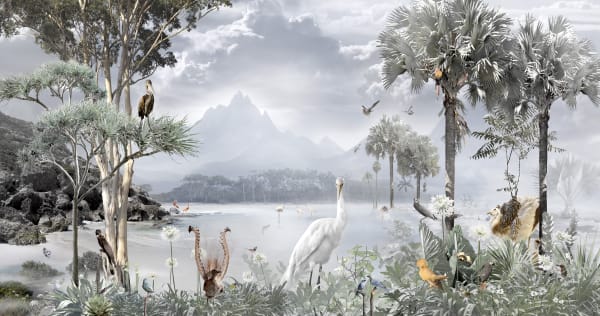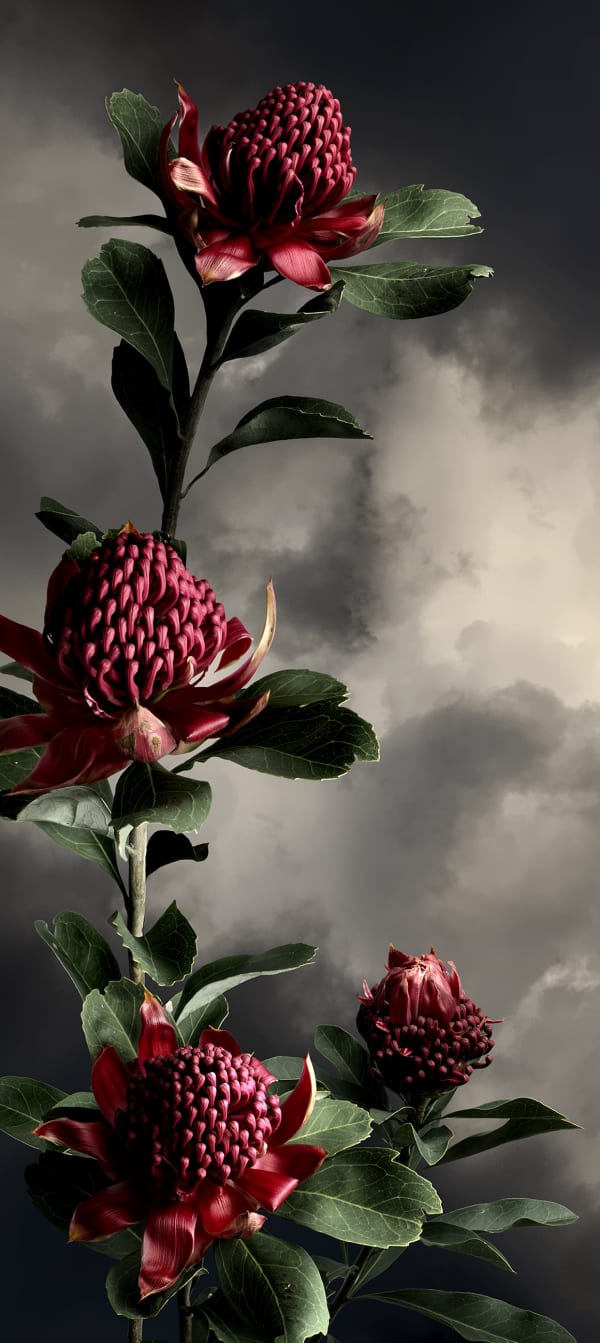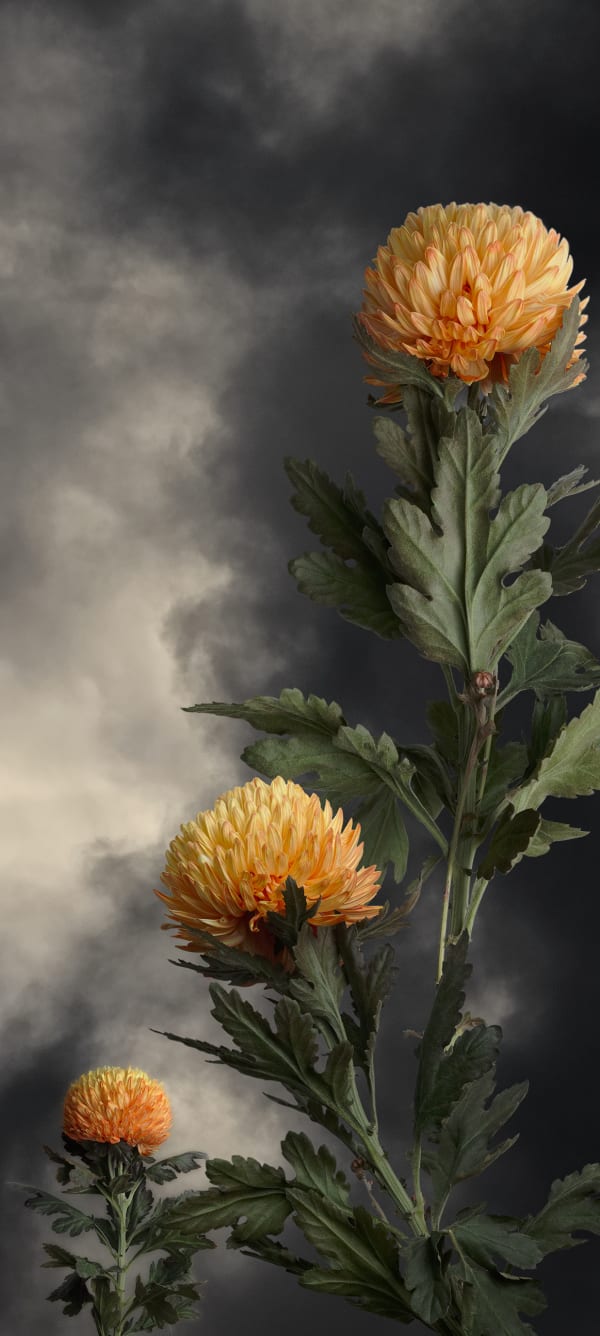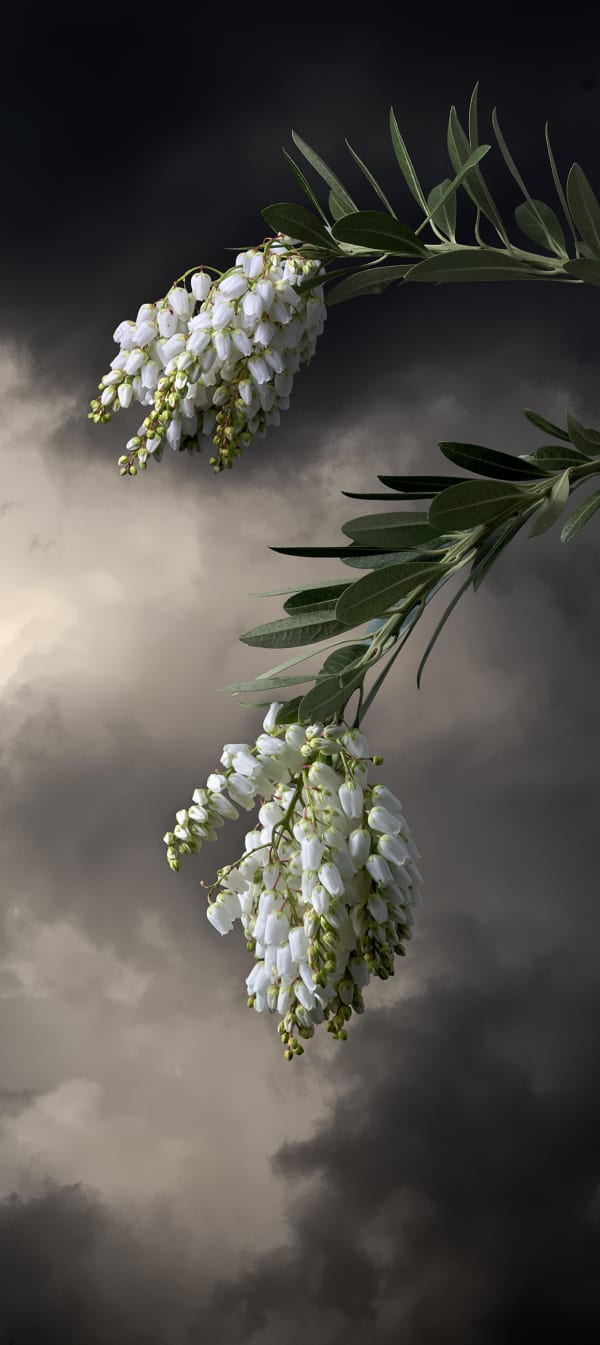Valerie Sparks: this is not a wallflower
'this is not a wallflower' brings landscape and botanical art together through a series of wallpaper installations.
Floral Panel
‘Sanctuary’ provides the over-arching concept for a new long-term project. It refers to both the idea of a sanctuary as a space for us to dwell in, as well the spaces people create to provide safety and protection for plants. I am interested in the role the relationship between art and science plays in this symbiotic relationship. The floral panels in this exhibition are the first works to emerge from this project and my ongoing residency with Melbourne florist Flowers Vasette.
‘Sanctuary’ involves researching and exploring the lives of key women botanical artists, including Ellis Rowan, Marianne North and Louisa Anne Meredith, who made significant contributions to our understanding of bio-diversity. The floral panels in ‘this is not a wallflower’ are a homage to the achievements of these women, in particular the work of Margaret Anderson Hope (1938-1934), a Tasmanian artist whose work is on permanent display the Tasmanian Museum and Art Gallery.
Le Vol
French scenic wallpapers have been an enduring source of inspiration for my practice. I use photography to bring this aesthetic into a contemporary milieu as a way to create connections between historic and contemporary representations of Australian landscape. I am interested in creating landscapes that resonate with a sense of familiarity but are at the same time non-specific; a representation of Australia as a hybrid, pluralistic place, blending disparate elements from local and distant locations.
The French term Le Vol translates as flight, flying, theft, robbery, burglary. For the birds in this work, life and flight have been stolen and yet strangely reanimated by the taxidermist. To create Le Vol, I photographed over 100 specimens from Australia, the Pacific, Africa, Europe and South America during residencies at the Vienna and La Rochelle Natural History Museums. Where-as collecting practices have changed dramatically, as implied in the title, Le Vol raises questions about early collecting as acts of theft.
-
 Valerie SparksLe Vol 1 Allusion & Illusion , 2019pigment printfine art print: 110 x 220cm (paper size)
Valerie SparksLe Vol 1 Allusion & Illusion , 2019pigment printfine art print: 110 x 220cm (paper size)
customisable wallpaper: 240 x 400cm (base size)edition of 8 plus 2 artist's proofsFINE ART PRINT: SOLD OUT | WALLPAPER: POA -
 Valerie SparksLe Vol 2 Allusion & Illusion, 2019pigment printfine art print: 100 x 190cm (paper size)
Valerie SparksLe Vol 2 Allusion & Illusion, 2019pigment printfine art print: 100 x 190cm (paper size)
edition of 8 plus 2 artist's proofsFINE ART PRINT: $7,700.00 -
 Valerie Sparks, Waratah, 2019
Valerie Sparks, Waratah, 2019 -
 Valerie Sparks, Protea, 2019
Valerie Sparks, Protea, 2019 -
 Valerie Sparks, Chrysanthemum, 2019
Valerie Sparks, Chrysanthemum, 2019 -
 Valerie Sparks, Grevillea, 2019
Valerie Sparks, Grevillea, 2019 -
 Valerie Sparks, Luculia, 2019
Valerie Sparks, Luculia, 2019 -
 Valerie Sparks, Andromeda, 2019
Valerie Sparks, Andromeda, 2019 -
 Valerie SparksWhite Neck Herron , 2011pigment inkjet print on paper, unframed65 x 45cm
Valerie SparksWhite Neck Herron , 2011pigment inkjet print on paper, unframed65 x 45cm
Edition of 5AU$ 1,400.00 -
 Valerie SparksPurple Heron, 2011Pigment Inkjet Print on paper, unframed65 x 45cm
Valerie SparksPurple Heron, 2011Pigment Inkjet Print on paper, unframed65 x 45cm
Edition of 5AU$ 1,400.00 -
 Valerie SparksLafaille's cabinet , 2012Pigment inkjet print on paper65 x 45 cm, unframed
Valerie SparksLafaille's cabinet , 2012Pigment inkjet print on paper65 x 45 cm, unframed
edition of 5AU$ 1,400.00 -
 Valerie SparksQuetzal, 2012pigment inkjet print on paper56 x 24 cm, unframed
Valerie SparksQuetzal, 2012pigment inkjet print on paper56 x 24 cm, unframed
Edition of 5AU$ 1,100.00 -
 Valerie SparksUntitled Bird #3, 2012inkjet print on paper, unframed65 x 44 cmEdition of 5AU$ 1,400.00
Valerie SparksUntitled Bird #3, 2012inkjet print on paper, unframed65 x 44 cmEdition of 5AU$ 1,400.00 -
 Valerie SparksUntitled Bird #1, 2012Pigment Inkjet Print on Paper56 x 24 cm, unframedEdition of 5AU$ 1,100.00
Valerie SparksUntitled Bird #1, 2012Pigment Inkjet Print on Paper56 x 24 cm, unframedEdition of 5AU$ 1,100.00















